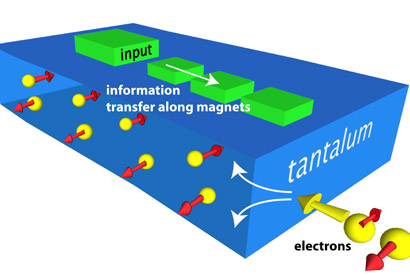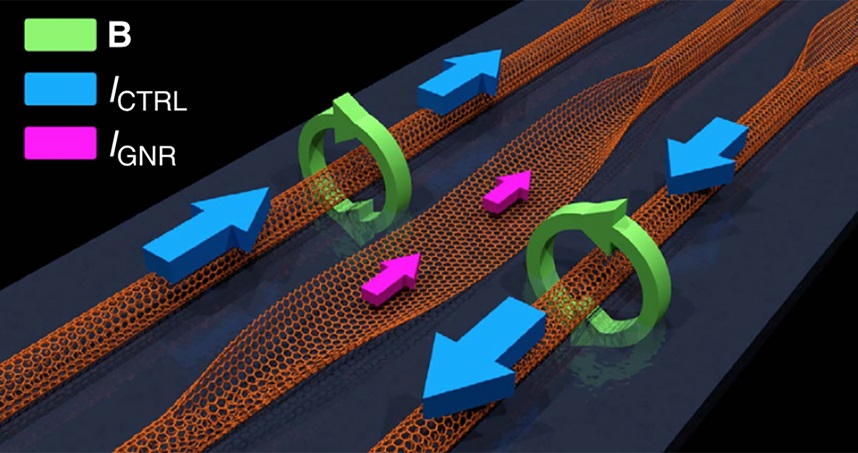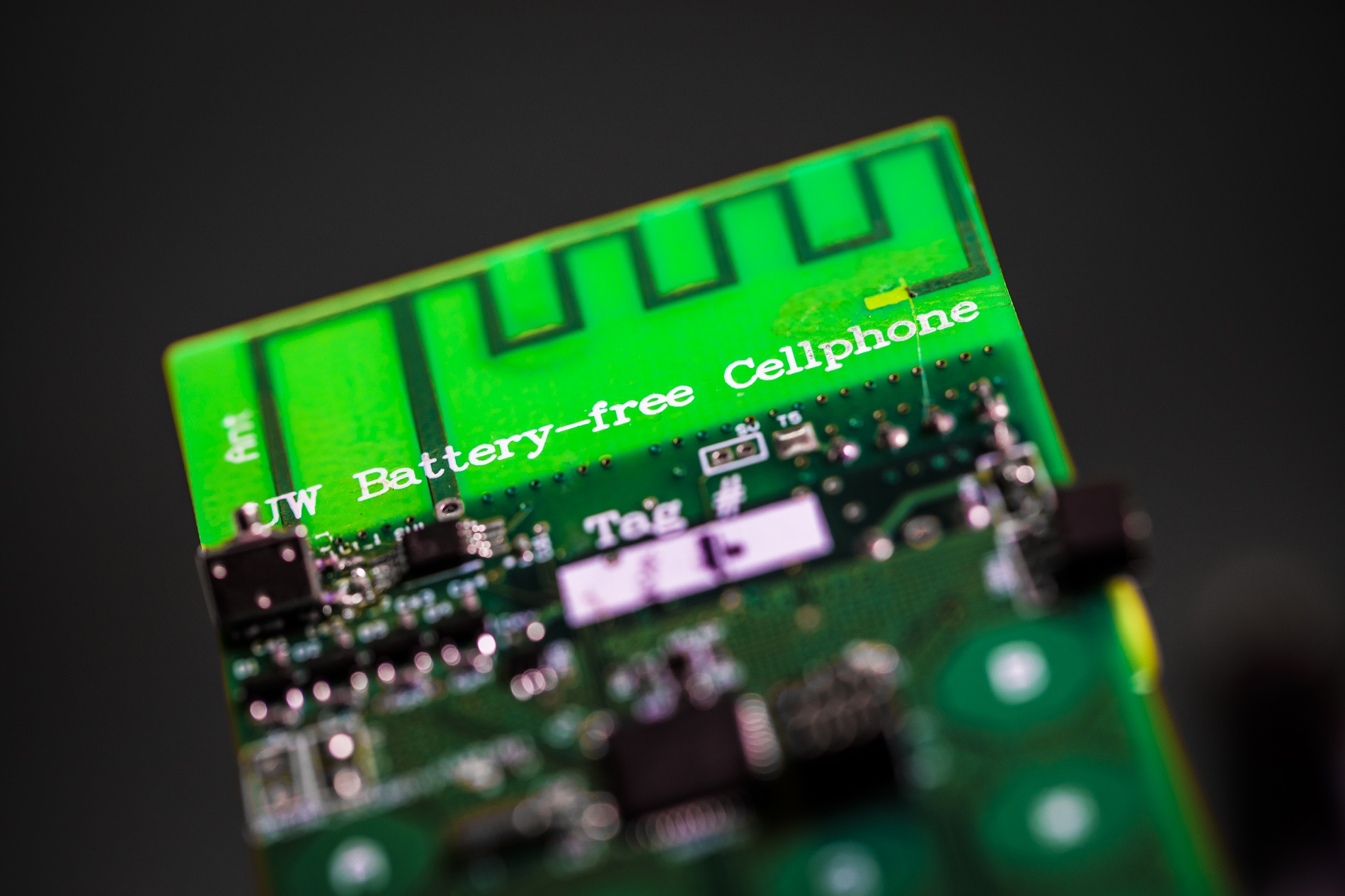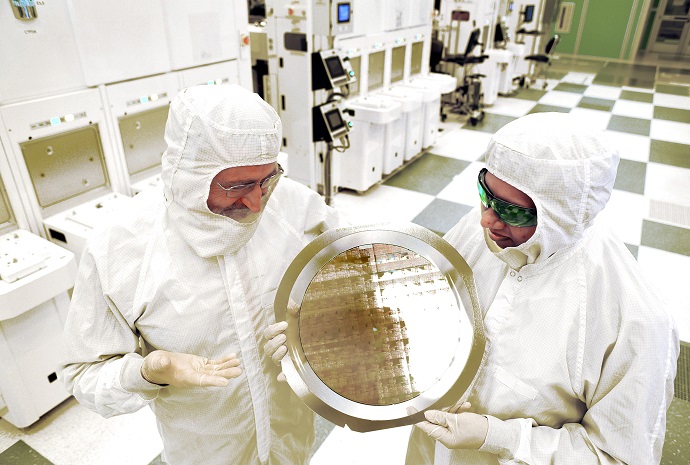November 18, 2013
By Sarah Yang
BERKELEY — New work by researchers at UC Berkeley could soon transform the building blocks of modern electronics by making nanomagnetic switches a viable replacement for the conventional transistors found in all computers.
Semiconductor-based transistors, the on-off switches that direct the flow of electricity and form a computer’s nervous system, have been consuming greater chunks of power at increasingly hotter temperatures as processing speeds grow. For more than a decade, researchers have been pursuing magnets as an alternative to transistors because they require far less energy needs when switching. However, until now, the power needed to generate the magnetic field to orient the magnets so they can easily clock on and off has negated much of the energy savings that would have been gained by moving away from transistors.
UC Berkeley researchers overcame this limitation by exploiting the special properties of the rare, heavy metal tantalum.
In a paper published online Sunday, Nov. 17, in the journal Nature Nanotechnology, the researchers describe how they created a so-called Spin Hall effect by using nanomagnets placed on top of tantalum wire and then sending a current through the metal. Electrons in the current will randomly spin in either a clockwise or counterclockwise direction. When the current is sent through tantalum’s atomic core, the metal’s physical properties naturally sort the electrons to opposing sides based on their direction of spin. This creates the polarization researchers exploited to switch magnets in a logic circuit without the need for a magnetic field.
“This is a breakthrough in the push for low-powered computing,” said study principal investigator Sayeef Salahuddin, UC Berkeley assistant professor of electrical engineering and computer sciences. “The power consumption we are seeing is up to 10,000 times lower than state-of-the-art schemes for nanomagnetic computing. Our experiments are the proof of concept that magnets could one day be a realistic replacement for transistors.”
Other co-authors of the study are graduate student and lead author Debanjan Bhowmik, and Long You, a research scholar.
The Defense Advanced Research Projects Agency, Semiconductor Research Corp. and the National Science Foundation helped support this work.
MORE INFORMATION
Spin Hall effect clocking of nanomagnetic logic without a magnetic field (Link to Nature Nanotechnology abstract)















